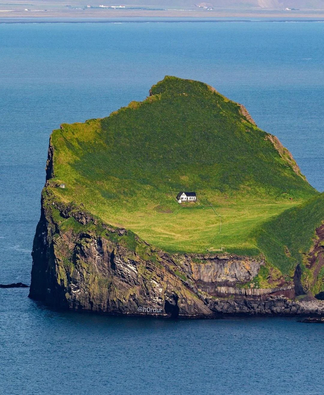I. The Spike

The Spike juts out of the hazy ocean, an irregularity within the otherwise-homogeneous matrix that encoded the blue plain’s flat form. A variegated wall of sediment holds the island up, refined and hardened by millenia of pressure to be the perfect Atlas for this solitary pocket-world.
At its north pole the great rock heaves its verdant back to the sky, as if making an earnest attempt to stretch towards the nebulous beyond within its gaze. But its opposite pole slopes precipitously into the grainy sea below; it clings to its solemnity, anchoring itself to the impassable blue.
Day after day the waves run headfirst into the crags, the waters teem with life, the clouds roll in and out in a grand, unending procession, the rains pelt the splotches of green on the island’s surface. The Spike’s eternal loneliness causes it to experience it all through a blurred lens–the images are there in some crude form, but the richness and romanticism that detail provides is absent.
The lone house of a lone resident stands directly in the eye of the green storm, a microcosm of its shell’s own isolation. The two ends of The Spike presage diametric futures for its sole resident; from his perspective, the north end shields him from the potential of the horizon, while the other ducks down to open his eyes to the outside world. But his presence on The Spike intrinsically represents both–he had come to life in the outer realm, and had reborn himself on the island in order to escape his origin, cloistering himself within melancholic solitude. He was a bridge for The Spike’s internal contradiction, and the only companion to its isolation.
The Spike will continue to be alone within the wide world. But for the time being its resident serves as a thin string of connective tissue, an attachment to the great beyond that it could never reach otherwise.
Photo taken by Hörður Kristleifsson
